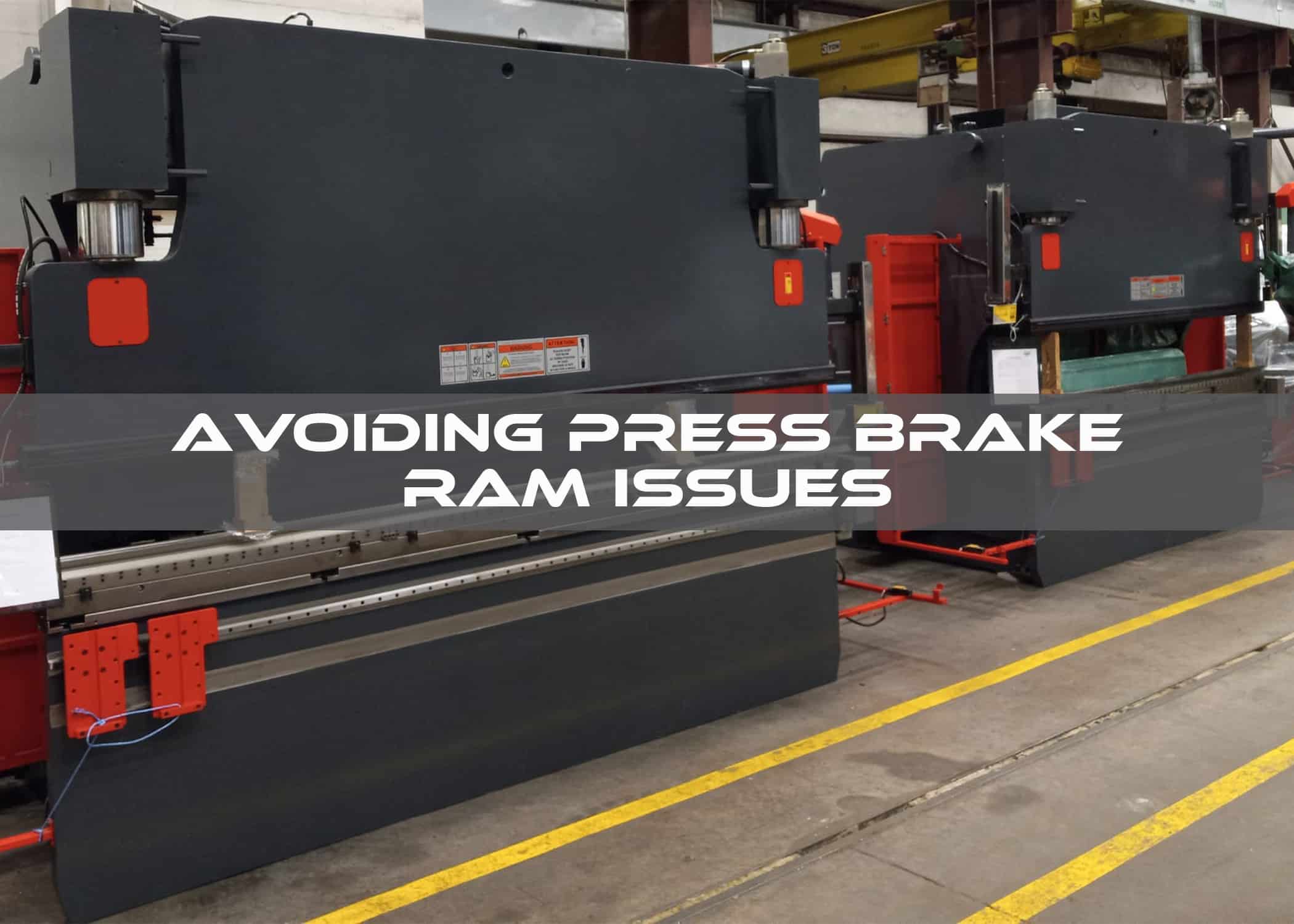The Part That Does the Bending
Press brakes are almost synonymous with metal fabrication. Any serious all-purpose fab shop will have one. When someone needs to create an angled bend in a piece of plate metal, the press brake is the machine for the task.
When tooling gets worn, a back gauge fails, or even a CNC control goes out, replacements can readily be found. However, if the ram—the biggest moving part of the brake, and the one that applies the tonnage to produce bends in the material—has issues, the shop might be in real trouble.
Understanding the potential problems that can occur with a press brake ram, and knowing how to prevent or address them promptly is essential to maintaining productivity and safety on the production floor.
Taking Care of Your Press Brake Ram
The following are some considerations for keeping your press brake’s ram operating smoothly:
- Use Correct Tonnage. Exceeding the press brake’s capacity can lead to damage to the ram and other components. Always adhere to the press brake’s listed tonnage capacity. Various factors must be considered when calculating tonnage, such as type of metal, length of part, size of V-die opening, and what type of bending is being done (such as air bending or bottoming). If a job requires higher tonnage, consider dividing the bending process into multiple steps or subcontracting the project to a shop with a larger brake. When purchasing a press brake, it’s usually a good idea to go up a size or two in length and tonnage than your anticipated largest regular project. Constantly running a brake at its maximum capacity is a formula for disaster.
- Prevent Over-Deflection. Deflection refers to the tendency of the ram and the bed to bend away from each other in the center when under a load. While there are methods of compensating for normal deflection that will occur during a bending cycle, heavy or repetitive use can cause the ram or bed to over-deflect, resulting in a permanent change to the machine. To prevent it, always follow the commonsense notion of avoiding overloading the brake. Try to make all bends at the center of the machine to equalize the load. Always use the appropriate tonnage and tooling for the job at hand.
- Monitor the Hydraulics. If your press brake is hydraulic, various problems can develop in the hydraulic system that affect the ram’s movement, such as leaks or inadequate pressure. A ram that drifts down on one or both sides when it is left raised and under pressure when the machine is stopped is an indicator of an internal oil leak in one or both cylinders. Regularly inspect the hydraulic system for leaks and ensure that the fluid level is within the recommended range. Lack of pressure could indicate damage to the oil pump or an issue with the pressure gauge or pressure control valve. Follow the manufacturer’s maintenance schedule for hydraulic system components.
- Maintain the Gibs. The press brake’s ram gibs are the parts that allow smooth vertical movement of the ram. Extra care must be taken when the machine is installed to ensure that it is level; otherwise, the frame might twist and cause the gibs to no longer be parallel. Accumulated grime and dust can cause excessive wear to the gibs. They should also be adjusted as a part of preventative maintenance according to the manufacturer’s recommendations to maintain proper clearance. Too much or too little gib clearance will cause issues with the job or even do damage to the machine.
- Listen to Your Press Brake. Just like your car, your press brake should make certain sounds when it is running well. Different sounds, especially harsh ones, can well indicate a problem. An impact sound during rapid descent could indicate loose guide rail plates, while vibrations or noise during a slow descent could indicate a lack of lubrication or other issues. Pay attention to what your brake is telling you and check out every odd noise, smell, or vibration.
- Check Electrical Components. Issues with the electrical or control systems can result in erratic ram movement or failure to respond. Perform regular checks on electrical components, such as switches, sensors, and control panels. Follow the press brake manufacturer’s guidelines for maintenance and troubleshooting. Ensure that operators are trained on proper machine usage and safety protocols.
- Preserve Tooling. Worn-out or wrongly seated tooling can lead to poor-quality bends and increase the risk of damage to the ram. Regularly inspect and replace tooling as needed. Use the correct tooling for the specific material and bending application.
As with any metalworking machine issue, ram problems can be largely avoided by the simple formula of keeping things cleaned, checked, and maintained. Frequently checking and adjusting the ram’s alignment while keeping it and its associated components well-lubricated and clean of dust and debris is a key to good press brake performance.







